2



2B Vermillion Plain Talk
Heritage 2016, www.plaintalk.net
ELCA Lutheran Church
Trinity Celebrates Long History In Vermillion
BY DAVID LIAS
david.lias@plaintalk.net
Aside from the short-lived
Haugean society organized
by the Rev. Gunnar Graven
and the lay preacher George
Norbeck in 1874, there is
little record of any Lutheran
church activity within the
town of Vermillion prior to
the formation of the Trinity
Lutheran congregation in
1891. During the late 1880s,
however, the Dakota Republican noted occasional trips
by Norwegian families to
Sunday services in the Pleasant Valley house of worship,
served at the time by the
pastor of St. Paul’s congregation in the Brule settlement
in Union County. There is,
also, a record of Lutheran
services in Charrlin Hall during July 1883.
When the Rev. Oli T. Nelson accepted a call to the St.
Paul parish in 1891, he began
to hold occasional services
in Vermillion, meeting in
private homes as well as in
the former Episcopal structure on Church Street that
had become the home of
the Swedish Congregational
organization. A congregation was organized and a
constitution adopted by the
end of the year. The original
membership included six
married couples and two
single individuals.
The following February,
the sum of $825 was raised
by subscription and a lot
procured on the northeast
corner of National and
Harvard streets for a church
building. The contract for
the construction was let H.O.
Malby, one of the charter
members. Since the entire
cost of the project was about
$1,200, making it necessary
to place a $300 mortgage
on the property, articles of
incorporation were drawn
up on Dec. 2, 1892 by the
trustees which included G.
P. Gilbertson. The church
society was incorporated as
the Norwegian Evangelical
Lutheran Trinity Church of
Vermillion, affiliated with the
Augustana synodical body.
The membership almost
doubled by the time of the
annual meeting held in the
early part of 1893, according to Herbert S. Schell in
his book, “Clay County”:
Chapters Out of the Past.”
The congregation then
established a Sunday School
which has remained in
continuous operation to the
present time. The church
was dedicated on July 20,
1896
In the meantime, several
Danish families, who had
taken up residence in Vermillion, organized a Lutheran
congregation served by a
minister from Beresford. In
November 1902 this society
entered into a relationship
with the Norwegian Trinity
Lutheran group whereby
it shared in the services,
including Sunday School and
Luther League.
The congregation was
left without a regular pastor
until July 1906 when the
Rev. J. R. Lavik assumed
the position. Within a year
after his arrival, steps were
initiated for a replacement of
the original building now no
longer considered adequate.
The congregation had grown
to a membership of 150,
made up of Norwegians,
Danes and Swedes. There
was, moreover, a Sunday
School enrollment of about
60. A new structure was,
accordingly, built on the corner of Main and Harvard at
a cost of $12,000; dedicatory
services were held on June
20, 1909. Three years later a
parsonage came into existence at 17 South Harvard.
By 1914, the membership roll had grown to 174,
including 90 of Norwegian
stock. The rest, generally,
represented members of
Danish, German, Swedish
and mixed ancestry. Pastor
Lysness was followed by A.
T. Tolleys who served for
two and a half years and was
succeeded in turn by L. A.
Roseland who accepted the
call in July 1926. He served
as the pastor until June 1951
-- a period of 25 years. In
1931, Pastor Roseland also
assumed duties as the superintendent of the Dakota
Hospital. The Rev. Richard E.
Larson, director of religious
activities at the University
of South Dakota, became
assistant pastor in charge
of student activities in 1945,
holding that position for
seven years.
The Rev. David W. Preus
was installed as pastor in
March 1952, remaining in his
position until June 1957. He,
subsequently was to play a
prominent part in national
church activities, becoming
president of the American
Lutheran Church in 1973
and vice-president of the
Lutheran World Federation
in 1977.
The Trinity congregation
began an era of expansion
during the ministry of Pastor Preus which coincided
with the rapid growth of
the Vermillion community
and, more particularly, the
sharp increase in university
enrollment that was nearing
the 2,500 mark. The latter
brought to the town a vast
Lutheran clientele which
needed to be served through
improved facilities as well
as by enlarged staff for Lutheran student work.
In addition to several
innovations instituted by
the new pastor within the
congregation, a parish
worker was employed for
the first time in September
1954. The congregation took
its initial step in the expansion program by purchasing a residence at 24 South
Harvard for use as a parish
house. This was followed a
year later by a decision to
launch a building program
to relieve an overcrowded
situation with respect to
After 55 years in its old
building, the congregation of Trinity Lutheran
Church decided to build
a new structure at the
northeast corner of Plum
and Clark streets. Of modern design, the building
used an altar from the
original Norwegian Lutheran Church. This building was dedicated on Nov.
20, 1965, and a new sanctuary was built on the east
side of the church in the
1990s and used some
of the old stained glass
windows from the previous building that had
been saved by a contractor. This photo, courtesy
of Jeanette Williams, appears in “From the River
Valleys to the Rising Bluff
– A Pictorial History of
Vermillion, South Dakota.”
Sunday School activities as
well as to accommodate the
growing number of Lutheran
students at the university.
At the annual meeting
held in January 1956, it was
decided to secure lots on
the northeast corner of Plum
and Clark streets for the purpose of constructing an education building that would
include a fellowship hall
made temporarily available
for religious services. In the
meantime, a residence at 408
East Main began to serve as
parish house in replacement
of the structure on Harvard
Street. The latter became the
parsonage following the sale
of the residence acquired in
1912.
The first services in the
new one-story building north
of Prentis Park were held
on Sunday, Nov. 6, 1960,
with about 500 people in
attendance. The anthem was
sung by a massed choir of
110 voices, representing the
combined junior, high school
and senior choirs. The
program was preceded by
a short service conducted
outside the building. Full use
of the new structure began
two weeks later.
The new construction
contained a large fellowship hall that could be used
for services until a proper
sanctuary was added on the
east. The altar was specially
DAVID LIAS/FOR THE PLAIN TALK
Built of durable brick and stone on the northeast corner of Main and Harvard streets
for approximately $10,000, the new Trinity Lutheran Church was a tremendous
improvement over the old wooden frame building. The building served the
congregation until 1965, when it was razed.
designed so as to be concealed whenever the room
was utilized for other activities. The building, moreover,
contained a Student Center
-- supported by the National Lutheran Council -- a
number of Sunday School
classrooms, a youth room
accommodating the junior
Vermillion’s Methodist Churches
and senior Luther Leagues,
a pastor’s study and four
offices as well as complete
kitchen facilities.
Although the original
plans called for a later
sanctuary, it was decided in
1978 to continue the existing
facilities for regular religious
services. The Student Cent-
er, however had been moved
during 1972 to the southwest
corner of Cherry and Plum
streets. In the meantime, numerous improvements were
made to the building for its
more efficient utilization.
Circuit Rider
Held Methodist
Services Here
In 1860
BY DAVID LIAS
david.lias@plaintalk.net
ABOVE: After a fire destroyed their original church in
1927, the congregation of Vermillion’s Methodist church
built a new place of worship on the corner of Dakota and
National streets. Dedicated on Sept. 25, 1929, the church
consisted of a sanctuary on the north, a social room and
kitchen in the center, and the Wesley Foundation on the
south. The church still serves the congregation today,
and is also home to The Welcome Table. This photo appeared, courtesy of Jeanette Williams, in “From the River
Valleys to the Rising Bluff – A Pictorial History of Vermillion, South Dakota.”
RIGHT: Methodism began in Vermillion in October 1860,
when circuit rider Septimus W. Ingham held a service in
a city tavern. On Oct. 31, 1873 – 13 years after that original meeting – the Vermillion Methodist Church dedicated
its new building, built on top of the bluff on the corner of
Church and Bloomingdale streets. Image courtesy of the
Clay County Historical Society
Methodism began in Vermillion in October 1860,
when circuit rider Septimus W. Ingham held a service in
Mulholland’s Tavern. A Methodist religious organization
was formed in town on Jan. 31, 1861, but it took 12 more
years before they were to get their own building.
On Oct. 31, 1873, the Vermillion Methodist Church
dedicated its new building, built on top of the bluff on
the corner of Church and Bloomingdale streets at a cost
of about $2,000. It was the largest church in town for 15
years.
With the growth of the church came the need for
more space. On Jan. 17, 1896, the new Methodist Church
was dedicated on the northwest corner of Main and Dakota streets, a large brick building that cost $9,000 and
was a big improvement to the old frame one on Church
Street.
On Nov. 24, 1927, the church was practically destroyed by fire. The cause was later determined to be
due to a short circuit in the wiring caused by someone
putting two pennies behind the fuse plugs instead of
replacing them with new ones. As a result, two pennies
caused over $17,000 in damage to the building.
After the fire, the Methodists sold their corner lots to
Wright and Carlson for $12,500 and built a new church
on the southwest corner of Dakota and National streets.
Dedicated on Sept. 25, 1929, the church consisted of a
sanctuary on the north, a social room and kitchen in the
center, and the Wesley Foundation on the south.
Information for this story was provided by the history book, “From the River Valley to the Rising Bluffs.”
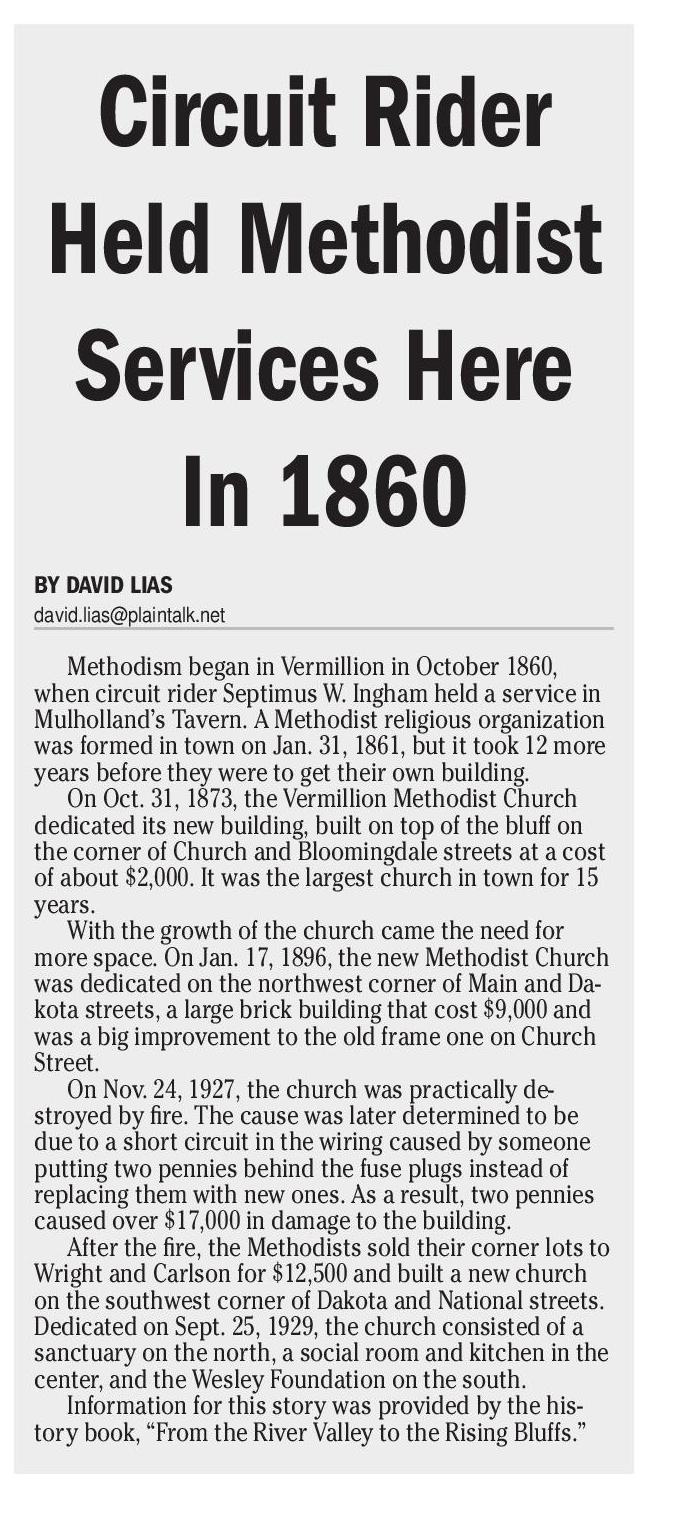



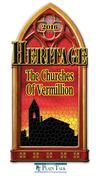
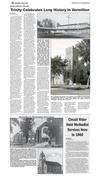
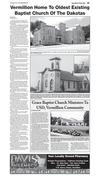
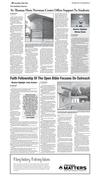




 Previous Page
Previous Page






